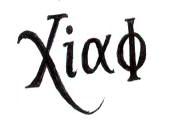The rise of the ‘ilustrado’ (Manila Times Walking History)
by xiaochua
By Michael Charleston “Xiao” Chua
June 27, 2020
PEOPLE dream because they love.
In 1807, disgruntled wine lovers in the north started a revolt when the Spanish colonizers monopolized the selling of their produce, the basi wine. They seized control of many towns but were crushed on their way to the Ilocandia capital, Vigan. Many of the rebels were killed, and their leaders publicly executed.
In 1811, freedom-loving Mexicans started their war of independence. This was to have an earth-shaking effect on colonial Philippines, which was being ruled by Spain from Mexico and was economically dependent on the Galleon Trade between the two colonies for 200 years. By1815, the last trading galleon made its last trip to Mexico, never to return.
In 1812, Spaniards, loving their “madre patria,” who were resisting a pro-Napoleon regime, established their own government and enacted what is known as the Cadiz Constitution, which limited the absolute rule of royals and guaranteed freedoms to citizens.
Although that government was short-lived, the ideas of that constitution resonated with the Spanish elites who were born in the Philippines called the “insulares,” also called “Filipinos.” Sure, it did not give citizenship to the natives of the colonies called “indios,” but the insulares also re-examined their own place in the colonial system and started to question why there were “Two Spains” — a liberal Spain in Spain and a backward and repressive colonial Spain in the Philippines. They probably started to feel love for the fellow who was not getting as much. Insular military officers like the Bayot brothers and Andres Novales mutinied against their own kind in the early 1820s and rich people like Domingo Roxas, who co-founded what is now known as the Ayala Corp., the country’s oldest conglomerate, were not only active in economic societies helping natives find livelihood, but were also being suspected by the colonial government of agitating for reform anonymously. These led to their imprisonment.
But the poor indios, except in those provinces that were loyal to the Spaniards like Pampanga, were perhaps unaware of these developments, and unaware that they could have a shot in life. That they could dream that their lives could be better.
In 1834, the King of Spain abolished the Royal Company of the Philippines, ending the Spanish monopoly that characterized the economy. The colonial government was forced to open the ports of the Philippines to world trade, which is, perhaps, one of the best and enlightened decisions it could have made, as it would impact not only the economy, but also, the ordinary people.
With the British, French and German traders coming to the islands, they got middlemen who were only too willing to work for them, not the Spaniards but the indios and the Chinese mestizos. The sugar from Iloilo, Negros and Laguna; the coffee from Batangas; and many of our products supplied the world market. As always in history, social changes start with economic changes.
Suddenly the indios and mestizos were having unprecedented financial power in the 1830s and 1840s. This event was a turning point because the native indios would be separated from each other not only in terms of class but also of culture, thus the Great Cultural Divide between the educated and those that remained in the bayan. The new elites would have children born to comfort, and for the first time many of them would be sent to the excellent Spanish schools in the country by the 1860s, 1870s and the 1880s. They would become products of secondary schools such as Ateneo Municipal de Manila and Colegio de San Juan de Letran, and they would continue their tertiary education at the University of Sto. Tomas (UST). In the midst of suppression and censorship by the colonial government, these schools actually taught the new elite to ask questions, to be aware of the inequalities in the country, and to dream for those who have nothing. In 1869, some UST students secretly distributed leaflets asking for change.
The poster boy of their dreams was Jose Burgos, a mestizo who became a priest and finished seven degrees, two of them doctorates, before he was 35 — the person that we all can be. But their dreams would be dashed when in 1872 the Spaniards executed Burgos along with two others who campaigned with him for secular priests to have more say in the running of parishes which for centuries had been dominated by Spanish priests from the religious orders.
The execution by hanging was public and humiliating. And it achieved the desired chilling effect. People mentioned the year 1872 in hushed tones.
But these young people would travel to study abroad, and they would see the discrepancy in the Two Spains. They would learn about the “Ilustracion,” or the Enlightenment philosophy that dreams of a more equal and scientific future far from what were in the colonies. They would dream of better treatment for their kababayan at home. The ilustrado had risen to demonstrate love.
